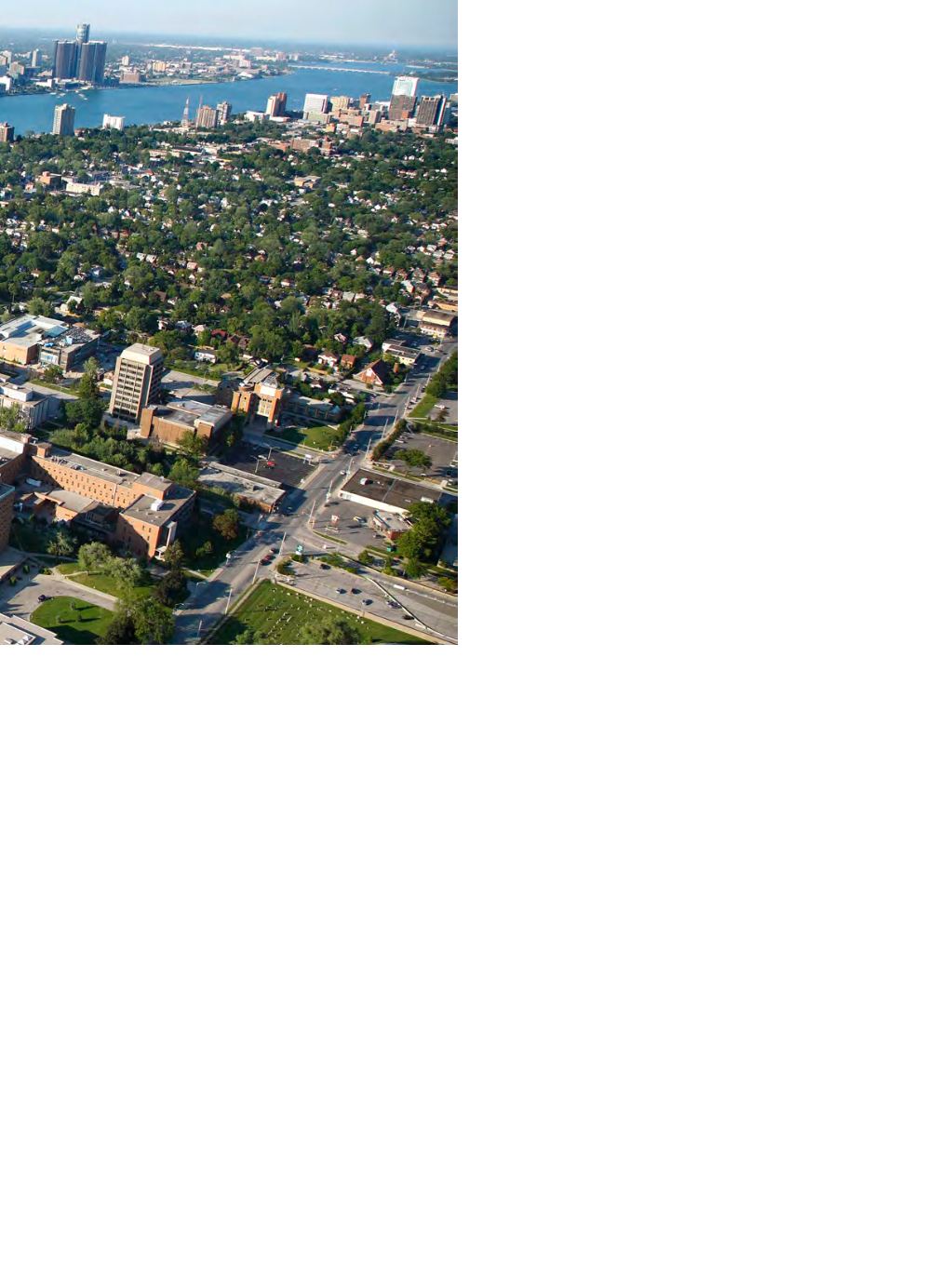
view . spring 2009
15
University true to its mission to provide accessible education to
the local region. Although the numbers of local students has been
growing, Smith thinks there is room still to strengthen UWindsor’s
position as a regional university. He says this region has a 25
percent concentration of higher education at the university level,
compared to 32.5 per cent in Ontario as a whole. “This leads us to
believe that there is the possibility of growth of local students from
the Windsor-Essex region.”
St. Clair College President Dr. John Strasser takes a similar
approach. He says demographics are changing at the post-
secondary level and in the competition for student enrollment, “it
makes sense to partner with the colleges around you because you
don’t have to do any recruiting.” Making it easy for students to
attend school locally, through articulation agreements between the
college and University and such initiatives as the proposed health-
sciences training centre, means “I increase my enrollment base, my
grant base, I don’t have to spend as much money recruiting people
and in the end everybody wins.”
Strasser says the breaking down of boundaries between the
college and University are especially important in the new global
economy. He says modern business needs a “skills-knowledge
balance” that the two institutions can deliver and this has led to
growth in the number of students taking programs at both the
college and University.
Both institutions also recognize the importance of research and
industry partnerships to the area, Strasser says. That is why he has
been talking to Wildeman about harnessing the “huge pool of very,
very talented people” in the automotive industry and using them in
other areas, such as aerospace and medical products.
Strasser adds that the college’s $40-million Ford Centre for
Excellence in Manufacturing has the ability to do research “so [we
can] work with the University to accomplish that objective.”
In a related area, Michael Burton BComm ’72, the former
Windsor-Essex Development Commission vice president who
became general manager at the University-based Institute of
Diagnostic Imaging in February), says: “In just about every pitch
we do to investors, and particularly the ones that come to visit us,
the initial pitch outlines the benefits of the area – and the University
and community college are big parts of that.”
As outside investors become more interested, he says, the
commission gets more specific with the resources available. For
instance, its Green Collar Jobs Coalition is looking into innovative
ways of storing wind power and the commission was able to tap
into University researchers who have done work in that area.
The commission has also established partnerships with
the University in other areas. Burton points to work with the
School of Computer Science’s Dr. Akshaikumar Aggarwal in the
Softech Alliance, a network for information systems and software
companies to share ideas as well as to develop and improve
their businesses.
graduation, benefitting the entire community. He also lauds the
greater accessibility for county residents to the St. Denis Centre.
Indeed, after a new stadium next to the Centre was built, one
study pegged the impact on the city of the 2005 Pan-Am Games
held there at $5.6 million in economic activity, about $1 million of
which went directly to local businesses.
Both the mayor and warden say that the University is a key
to diversifying the economy. They echo the findings of a 1998
Association of Universities and Colleges of Canada report that calls
university research a “powerful stimulant for economic growth and
social development.” And an economic impact report at UWindsor
found that in 2005/2006, $19 million of its $246 million in gross
expenditures went to research.
One of the University’s major influences on the region is
evident from its enrollment numbers. Dr. Clayton Smith, vice-
provost of students and registrar, said that of the 1,872 first-year
students enrolled at UWindsor, 83 percent are from Essex County.
Of total enrollment, about 60 percent of students are local.
Smith says the number of first-generation students (first in their
families to attend university) is significant, at 21 percent.
The reverse impact also holds, especially in the area of financial
aid. Smith says 1,291 students entering the fall 2008 classes – about
70 per cent – received a scholarship or bursary – holding the


